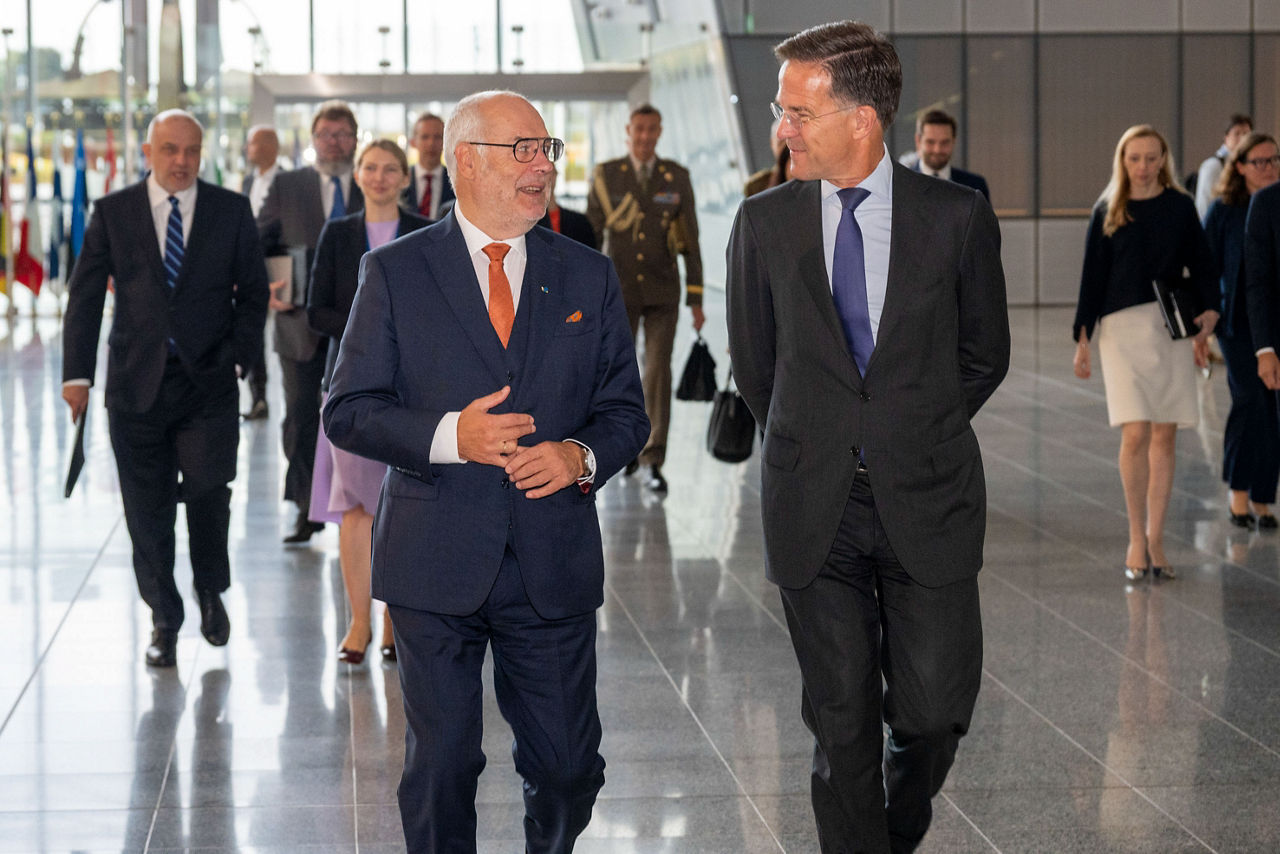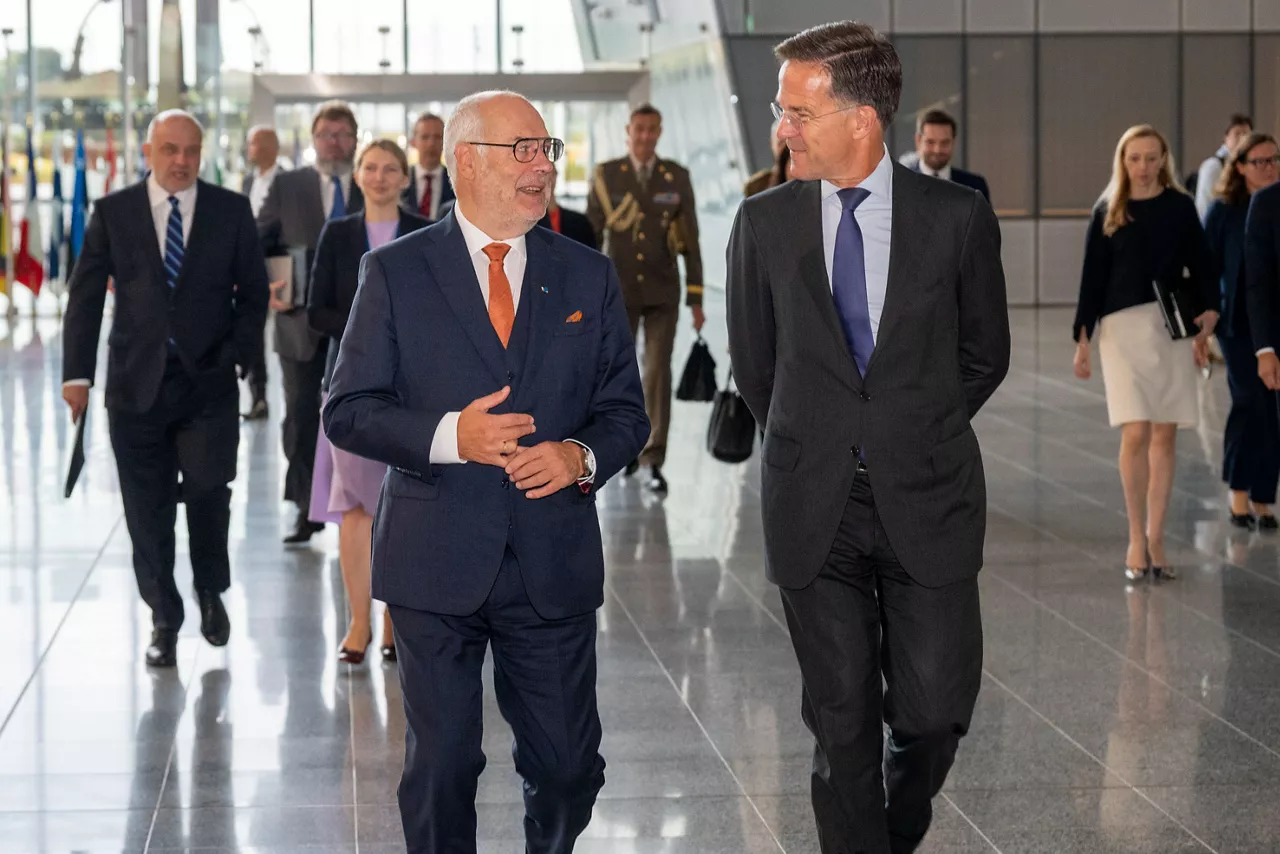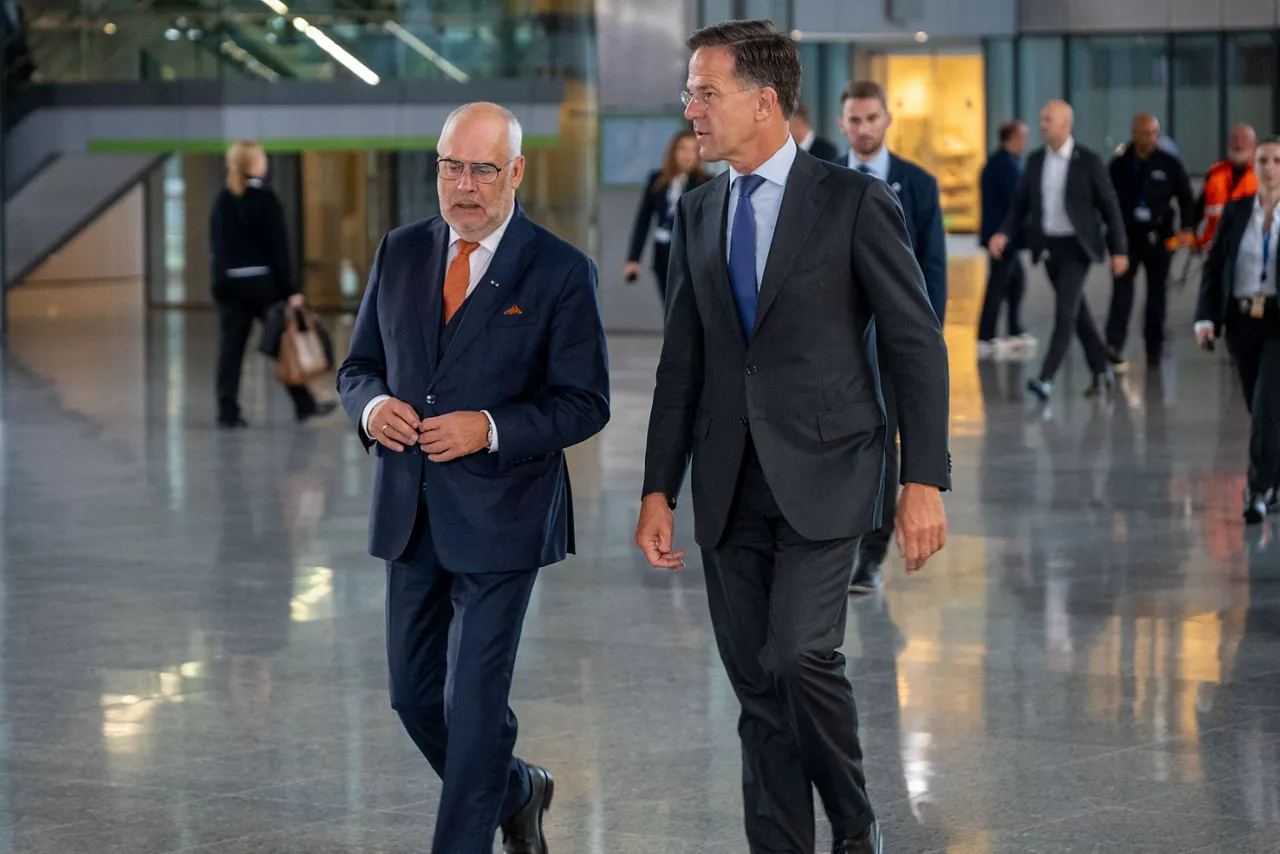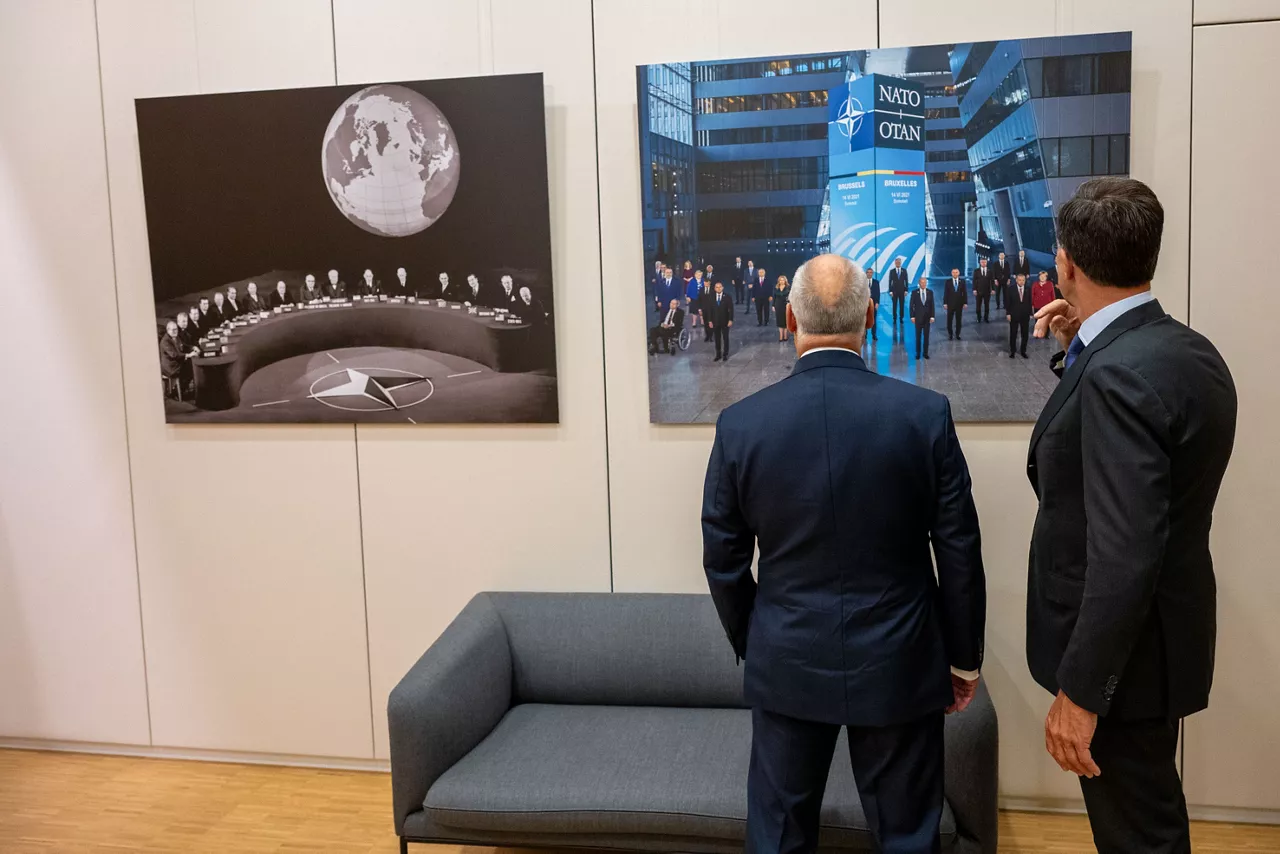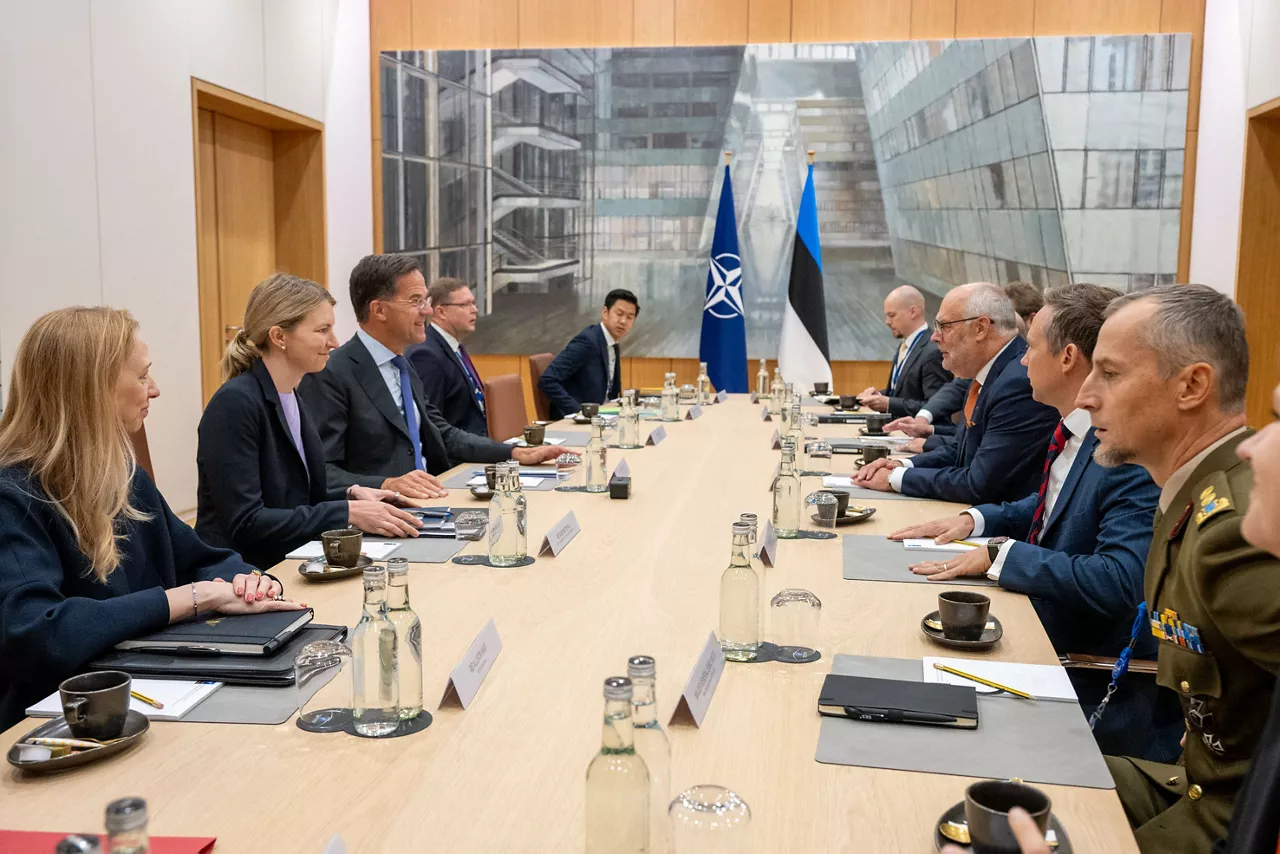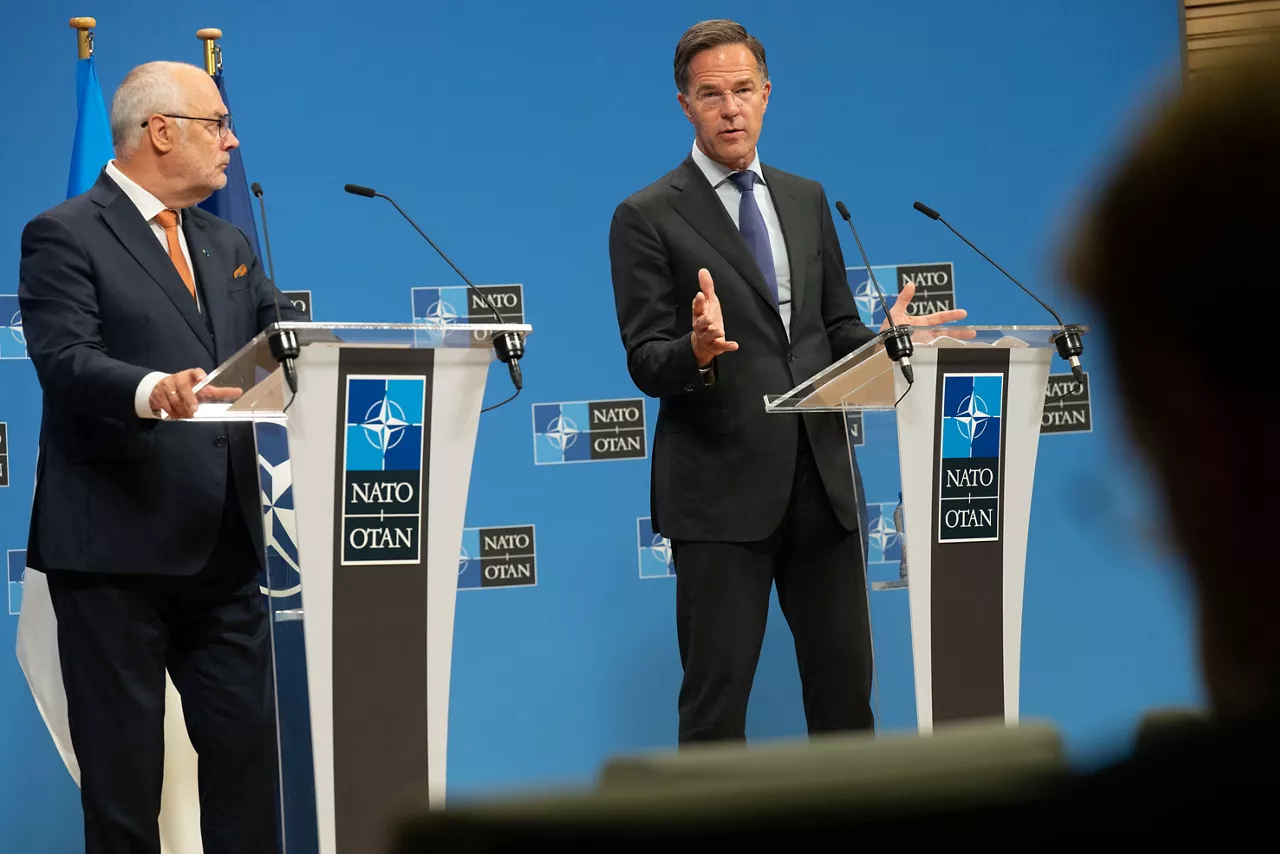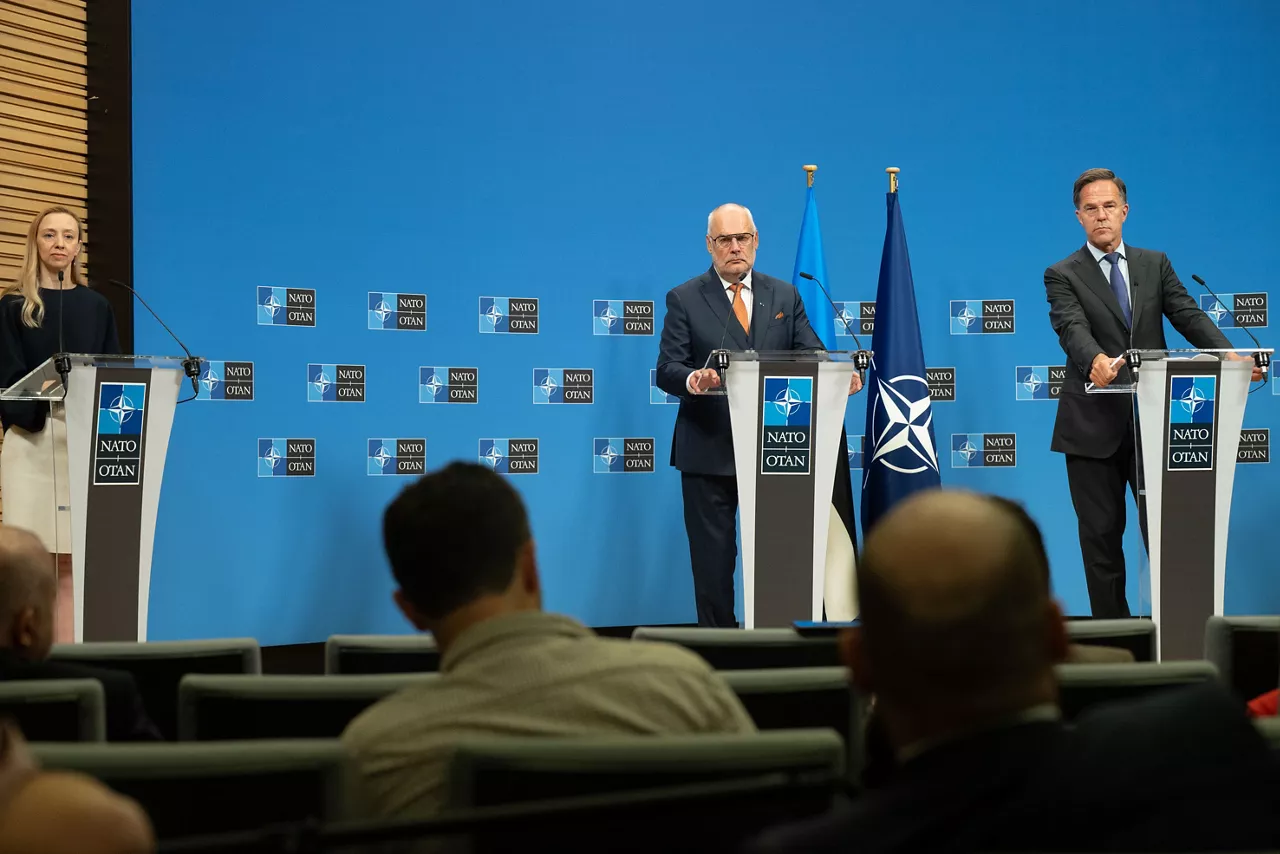Download NATO’s broadcast-quality video content free of charge

Log in
NATO MULTIMEDIA ACCOUNT
Access NATO’s broadcast-quality video content free of charge

Check your inbox and enter verification code
You have successfully created your account
From now on you can download videos from our website
Subscribe to our newsletter
If you would also like to subscribe to the newsletter and receive our latest updates, click on the button below.
Enter the email address you registered with and we will send you a code to reset your password.
Didn't receive a code? Send new Code
The password must be at least 12 characters long, no spaces, include upper/lowercase letters, numbers and symbols.
Your password has been updated
Click the button to return to the page you were on and log in with your new password.
(As delivered)
Good morning President Karis, dear Alar,
It is a pleasure to welcome you here to Brussels, and good to see you again.
Since 2004, Estonia has been a valued member of NATO, making major contributions to our shared security.
You host the UK-led Forward Land Forces in Tapa, deterring aggression on NATO’s eastern flank.
Estonia also hosts NATO’s Baltic Air Policing at Ämari Air Base, as well as the NATO Cooperative Cyber Defence Centre of Excellence in Tallinn, and a regional hub for the Defence Innovation Accelerator for the North Atlantic ‘DIANA’.
You contribute to the Baltic Sentry activity, NATO Security Assistance and Training for Ukraine and NATO Mission in Iraq.
At our Summit in The Hague, Allies agreed that to keep NATO strong, we need more capabilities, and larger forces at high readiness. That requires sustained investment – which is why we agreed that all Allies will invest 5% of GDP in defence by 2035.
Estonia is leading the way. You are already close to this benchmark, and plan to go even further in the coming years.
And these significant increases in defence spending strengthen our deterrence and defence, and demonstrate your unwavering commitment to our Alliance.
Estonia is also one of NATO’s staunchest supporters of Ukraine.
Since the start of Russia’s full-scale invasion, Estonia has provided Ukraine with significant military assistance.
You have committed to supporting Ukraine annually with at least 0.25% so quarter of a percent of your GDP and this year you have further stepped up your assistance, including through NATO’s Comprehensive Assistance Package.
Our ongoing support for Ukraine continues to be crucial – to ensure they have what they need to defend today. And so that when there is an end to this terrible war, peace will be protected.
In July in Washington, President Trump and I announced a new NATO initiative to deliver urgent support to Ukraine.
And in just a few weeks, this mechanism has channelled 2 billion dollars’ worth of urgently needed aid to Ukraine – from ammunition to advanced air defence. From the US to Ukraine, paid for by Allies.
And more packages are coming, and I want to urge all Allies to contribute to this and other initiatives that provide vital support to Ukraine.
We are all working to bring an end to this terrible war. Including through ongoing discussions on the provision of security guarantees for Ukraine.
The foundation of Ukraine’s security is Ukraine’s own armed forces – which NATO is already actively supporting, including through our command in Wiesbaden. And to complement Ukraine’s forces, the US and numerous others are working to design security guarantees that will ensure that once there’s peace, Russia will never ever again attempt to violate Ukraine’s sovereignty.
We know and we agree that Russia remains the most significant and direct threat to Euro-Atlantic security.
So we must remain vigilant, invest more in defence, expand defence industrial production on both sides of the Atlantic, and continue to support Ukraine.
President Karis, dear Alar – thank you once again for Estonia’s strong commitment to NATO, to our shared security, and to our transatlantic bond.
Estonia can count on NATO and I know NATO can count on Estonia.
The floor is yours.
Andrew Gray, Reuters
Thank you. Andrew Gray from Reuters. Secretary General, tomorrow, you're expected to participate in the meeting in Paris, precisely concerning the security guarantees you've mentioned. What do you expect from that meeting, and can you just give us an update on the state of the process here? How close are you to having concrete plans, or will you be looking at options? Where are you in the process?
NATO Secretary General
To start with your first question. This whole process started with President Trump breaking the deadlock in February by engaging in conversations with Putin. Putin was clearly impressed of all evidence that we were able to come to the 5% agreement in The Hague in June. Then this initiative to send lethal weapons from the US into Ukraine, paid for the European Allies, which you agreed mid-July, and secondary sanctions the US announced mid-July, and have now hit India, because India is still buying oil and other stuff from Russia and is not putting pressure on Russia to end the war. So all of this is clearly evidence that US is serious, wants to end this. And what the Europeans did, starting in February, sit together, and by the way, later on, other countries, like Japan and Australia are participating in this Coalition of the Willing to see how collectively, can we organise the security guarantees for Ukraine to prevent a repeat from the Budapest Memorandum or Minsk. And a big breakthrough, particularly when it comes to security guarantees, was exactly three weeks ago, when in a phone call preparing for the Alaska meeting with European leaders, including Ursula von der Leyen and the President of France and others, the President of the US announced that he wanted to participate, to be part of those security guarantees. Now where are we at the moment: the Europeans, together with others, are as we speak, finalising at the level of Chiefs of Defence, the Defence Ministers, the leaders. Tomorrow will be an important meeting. So I expect tomorrow, or soon after tomorrow, to have clarity on what collectively we can deliver. That means that we can engage even more intensely, also with the American side, to see what they want to deliver in terms of their participation in security guarantees, what that will look like, so that collectively we have that dealt with. And that will be important, because if a bilateral or trilateral meeting would start to happen with the Russians, particularly between Zelenskyy and Putin, having clarity on the security guarantees is extremely important. Because for the Ukrainians, they have one overriding priority, that if this war ends, and hopefully it will end sooner than later, because we have got to stop the killing. They want a situation in which this will never, ever happen again, that the Russians tried to catch one square kilometre of Ukraine. And then on your second question, then I'll hand over to the President. I can assure you that Supreme Allied Commander is also involved in all of this. And why? Not because NATO will, as an organisation, play a role in the security guarantees, but we have to make sure, and that is why I, myself and SACEUR and others are discreetly part of all the conversations. Exactly to your question, yes, security guarantees for Ukraine, but we have to prevent spreading our resources too thinly. And that means that you always have to look what the impact will be on the NATO plans, the Forward Land Forces, etc, etc.
Joakim Klementi, Estonian Pubilc Broadcasting (ERR)
Hello, Joakim Klementi from the Estonian Public Broadcasting. So the Hague Summit was obviously a success. 5% is an impressive promise, but now comes the hard work of actually making sure all Allies follow up on this. We have an example from Estonia where we're trying to get there already next year, but the deadline further is longer with capability targets and military secrets. For the general public, this is kind of a black box, sometimes in terms of how effective progress that we're making. So my question is, what is NATO planning to do to assure everybody that we're actually effectively meeting these targets at a timely pace and spending the money in the right place, buying steel and gunpowder, not just bells and whistles?
NATO Secretary General
This is crucial, this question. And we have to deliver on this, because the last thing you want is that by 2034 we are still on where we are now. And then in the last year, there will be a hockey stick towards 5%. And you know, you can never then get that money spent. So there has to be a credible trajectory from every country moving into the 5% target in 2035. That's part of the agreement that every country will present over the coming time a credible path leading into the 5%. And what makes it somewhat easier, this is not easy, but somewhat easier is the fact that we have these capability targets. So every country knows it is not just spending 3.5%. No, it is spending 3.5% so that when the moment would come, that Article Five would be activated, that we all know what our role has to be, the Germans, the Dutch, the Estonians, everyone where to go to with what troops, what capabilities, etc. And that will also feed into the defence industrial demand. That's why we have to ramp up defence industrial production, because this is not only about men and women in a uniform, very much so, but also making sure that you have the military output from our industries. That's why I was, last week, so happy in Unterlüß, in Germany that this Rheinmetall shell factory 155-ammunition was opened in only 15 months. It came about. He promised 12 months. It was 15 months. It is still an extremely successful outcome that in only 15 months from nothing to a full functioning factory that happened. And we need this all over NATO, including in the US. Because also in the US, they have to ramp up as all nations in NATO have to do their defence production, so that will be connected to that. But to the back to your question. It has to be credible path. And for this year, very important that the non-two percenters all committed to 2% this year, will by the end of this year, indeed have reached 2%. And they have already committed to this yesterday, it was in Luxembourg, and they did, but also the other countries. So I'm fairly optimistic, but I can assure you, I will press for this. And if I would one day forget to do it, I know there is a President in Tallinn who will call me and say, ‘Hey, Mark, we are on 5% already in 2025, 2026. Make sure the rest will at least deliver not later than 2035.’

